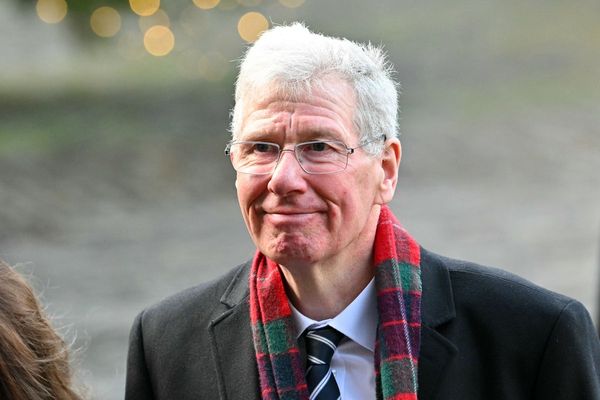
To the extent people outside the Baltic Sea coastal community have heard of the Port of Sassnitz, chances are it’s courtesy of Sen. Ted Cruz. Last fall, the junior senator from Texas—teaming up with fellow Sens. Tom Cotton and Ron Johnson—sent the German port a letter threatening “fatal measures” should it proceed with its plans to become a hub for Nord Stream 2. The humble Baltic Sea port, known mostly for its ferry traffic to Sweden and Denmark, is caught in a vicious geopolitical battle that sends a dire warning to businesses everywhere.
“This letter serves as formal legal notice that these goods, services, support, and provisioning [for vessels involved with Nord Stream 2] risk exposing Fährhafen Sassnitz GmbH and Mukran Port, as well as your board members, corporate officers, shareholders, and employees, to crushing legal and economic sanctions, which our government will be mandated to impose. These sanctions include potentially fatal measures that will cut off Fährhafen Sassnitz GmbH from the United States commercially and financially,” Cruz, Cotton, and Johnson wrote last August to Harm Sievers, the port’s managing director, and Fridjof Ostenberg, its legal director. Whatever one thinks of Nord Stream 2, these were highly unusual threats. Not only were they directed against a German company that operates in Germany and has broken no laws, but they were issued by three U.S. legislators without powers to impose such measures.
But for the Port of Sassnitz, there’s no longer such a thing as being a humble Baltic Sea port mentioned only among shipping crews, maritime analysts, and local tourists. Indeed, there’s no longer even such a thing as being a humble 5G technology giant or a humble fast-fashion behemoth. As Ericsson, H&M, and other global brands have discovered in recent months, you can suddenly find yourself in the geopolitical line of fire, a situation most commercial outfits are not prepared for. The Port of Sassnitz now finds one of its most promising activities—that involving Nord Stream 2’s construction—an enormous vulnerability.
As shipping aficionados know, Sassnitz’s port—located on the island of Rügen, which protrudes from Germany’s Baltic Sea coast near the Polish border—has been receiving passenger ships from Sweden for more than a century. Later, ferries to and from Denmark joined the traffic as did cargo ships. In 1986, East Germany completed what turned out to be its final major infrastructure initiative, turning Sassnitz’s twin port of Mukran into a massive port for East German-Soviet trade. Iron, coal, and baby strollers traveled on the ships between Mukran and the Soviet-Lithuanian Port of Klaipeda. Unbeknownst to the East German public, so did weapons and Soviet troops.
On Oct. 2, 1990, I was one of the very last people to arrive in East Germany when the ferry from Trelleborg, Sweden, anchored at Sassnitz. At midnight, East Germany vanished. Soon afterward and for another four years, the Red Army’s nearly half a million soldiers stationed in East Germany made their final journey home via the Port of Mukran. Later, the ports of Sassnitz and Mukran merged to form one company, known today under the brand name of Mukran Port but with the legal name Fährhafen Sassnitz Gmbh. In common parlance, people still refer to the combined ports as Sassnitz.
In the middle of this vicious battle being fought between the United States and its otherwise close ally Germany is a small port, a business majority-owned by a town of almost 10,000 people. “It’s unacceptable that the port … has become a plaything for world politics,” Mecklenburg-Vorpommern’s premier, Manuela Schwesig, said last November. One may dislike Nord Stream 2, but Sassnitz’s dilemma illustrates a much larger reality: Business is no longer safe from geopolitics.
Back in the early 1990s, when geopolitics was thought dead and Sassnitz had to find ways of becoming commercially viable, the port expanded capacity for cargo traffic and passenger ferries from Sweden and Denmark but also to Russia, whose exclave Kaliningrad is not far from Sassnitz. In 2007, the German port launched a direct rail service to Baltiysk, Russia, which is close to Kaliningrad; indeed, Sassnitz remains the only port in central Europe capable of serving Russian-gauge rail cars. So successful has the Baltiysk route been that recently it has expanded to more weekly departures, and as of last year, it’s also part of China’s Belt and Road Initiative. Goods from Germany—including ones that have traveled to Sassnitz from Sweden—make the short journey to Baltiysk or Klaipeda, Lithuania, from where they travel on to China. (Klaipeda, incidentally, is caught in another geopolitical drama. Belarus-bound goods account for around one-third of cargo arriving at the Lithuanian port, which thus faces financial hardship should the European Union-Belarus standoff escalate further.)
Sassnitz is also building a rail link with the Dutch port of Rotterdam, Europe’s largest port. Like many other European ports, Sassnitz is publicly owned; the city of Sassnitz has a 90 percent stake and the state of Mecklenburg-Vorpommern has a 10 percent stake. “One of the reasons smaller ports like Sassnitz seeking growth look towards geopolitically fraught investment because mega-ports like Rotterdam, Antwerp, and Hamburg simply can’t be competed with for traditional import-export shipping,” said Cormac Mc Garry, a maritime analyst with the risk consultancy firm Control Risks. “But there’s an opportunity in that too. The relentlessly growing size of commercial ships has created a gap: Mega-ships can only call to mega-ports, but the goods still need to be moved on to local ports by smaller ‘feeder’ ships.”
China hawks have misgivings about the Belt and Road connection, but that dislike is nothing compared to the geopolitical hurricane Sassnitz has found itself in as a result of Nord Stream 2. Given the pipeline will come ashore on Rügen and end in the city of Greifswald, Germany—about an hour south of Sassnitz—the port saw an obvious opportunity to participate as a logistics hub when Gazprom and several Western European energy companies signed the Nord Stream 2 agreement in June 2015.
The port should have considered geopolitics. Former U.S. President Donald Trump never liked Nord Stream 2, nor did Poland, Ukraine, or indeed some U.S. Democrats. In 2019, Trump ally Richard Grenell, then-U.S. ambassador to Germany, wrote to various German companies involved with Nord Stream 2 threatening U.S. sanctions. Then Trump imposed sanctions on Nord Stream 2, and the construction—which was close to completion—was suspended. On his way out, Trump upped the ante, threatening European Nord Stream 2 contractors with sanctions. U.S. President Joe Biden has lifted some of these sanctions, angering congressional Republicans and others. “Oh my God, enable Russia!” exclaimed Sen. Joni Ernst when Biden announced his decision. Although Ernst has repeatedly warned of Russian influence, Nord Stream 2 issues seem to agitate some U.S. legislators more than Russia’s interference in U.S. elections. Biden, meanwhile, maintains he wants the pipeline killed.
Indeed, Nord Stream 2 may be today’s biggest bone of contention among Western allies because it represents their irreconcilably different views on Russia. The views on Russia and Nord Stream 2 of one Bundestag member in particular—German Chancellor Angela Merkel, who represents the Sassnitz area—are at odds with those of most people in Washington. And, considering legislators are accountable to their voters, why would Merkel want to kill a project considered a major asset to the struggling region she moved to at age 3? Biden hasn’t tried to close the corporate tax loopholes in Delaware, which benefits from the business influx those loopholes generate at the expense of other U.S. states.
Within Germany, too, there’s opposition to the pipeline, especially among the Greens. “In times when Russia violates human rights and tries to destabilize our democracies, there has to be a clear sign that we won’t let it continue,” said Claudia Müller, a Greens party member of the Bundestag who also represents the Sassnitz area. “This primarily has to happen through diplomatic channels, but the private sector, too, can send signals as to what’s acceptable and what’s not. Small- and medium-sized businesses on the Baltic Sea coast have no interest in a geopolitically weakened Germany. This is true also because the accelerating climate crisis, to which Nord Stream 2 will contribute, will have especially harmful consequences in coastal regions.”
Nord Stream 2’s 10-year-older twin, Nord Stream 1, which likewise travels through the Baltic Sea, caused less controversy, perhaps because it was inaugurated years before Russia’s annexation of Crimea and conflict with Ukraine. (Nord Stream 2 will send Russian gas directly to Germany, circumventing Ukraine.) And despite enormous concerns regarding China’s human rights practices and expansionist behavior, Western companies keep trading with it, and they’re not receiving Cruz-like letters threatening fatal measures—so far. To his credit, Cruz has long highlighted the Chinese government’s persecution of Uyghurs. Last year, he and other senators wrote to the Walt Disney Company inquiring about its cooperation with Chinese authorities in the Xinjiang-based production of the movie Mulan, although the letter was remarkably polite compared to the threats issued to German officials.
For Sassnitz, located in the northeast corner of Europe and not even one of northern Europe’s five largest ports, Nord Stream 2 seemed a viable business opportunity. U.S. politicians and others are entitled to dislike such choices. Merkel has never written letters or threatened EU sanctions against U.S., Japanese, or other companies going about legal business in their home countries, although it’s safe to assume she’s had opinions.
In fact, most leaders have opinions about business activities that go on in other countries—consider the logging of Brazil’s rainforests—but generally don’t write to issue threats. That’s because other leaders could then do the same to their countries, and such a constant stream of threats would cause certain chaos. For businesses, the specter of punishment halfway through a legal project raises a fundamental question: Which legal opportunities are acceptable to pursue, and which ones are not? The risk may prompt them to decide not to pursue any at all. The result of that would benefit no one.







